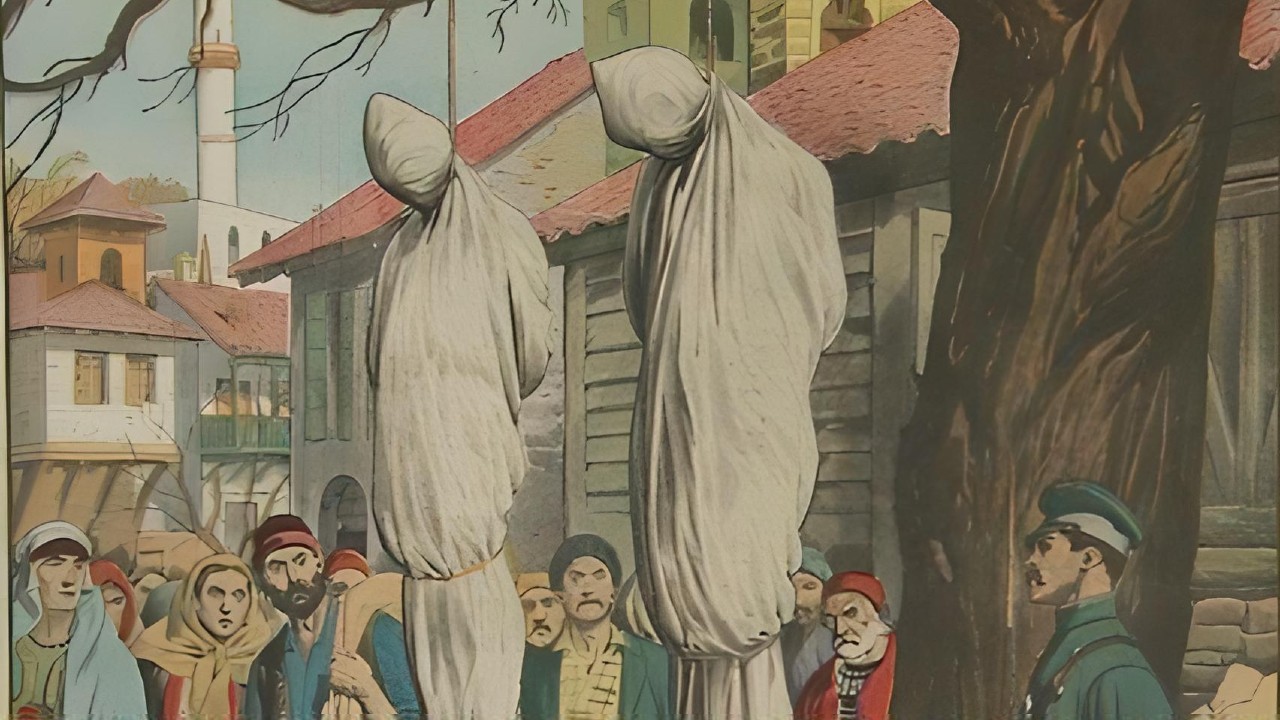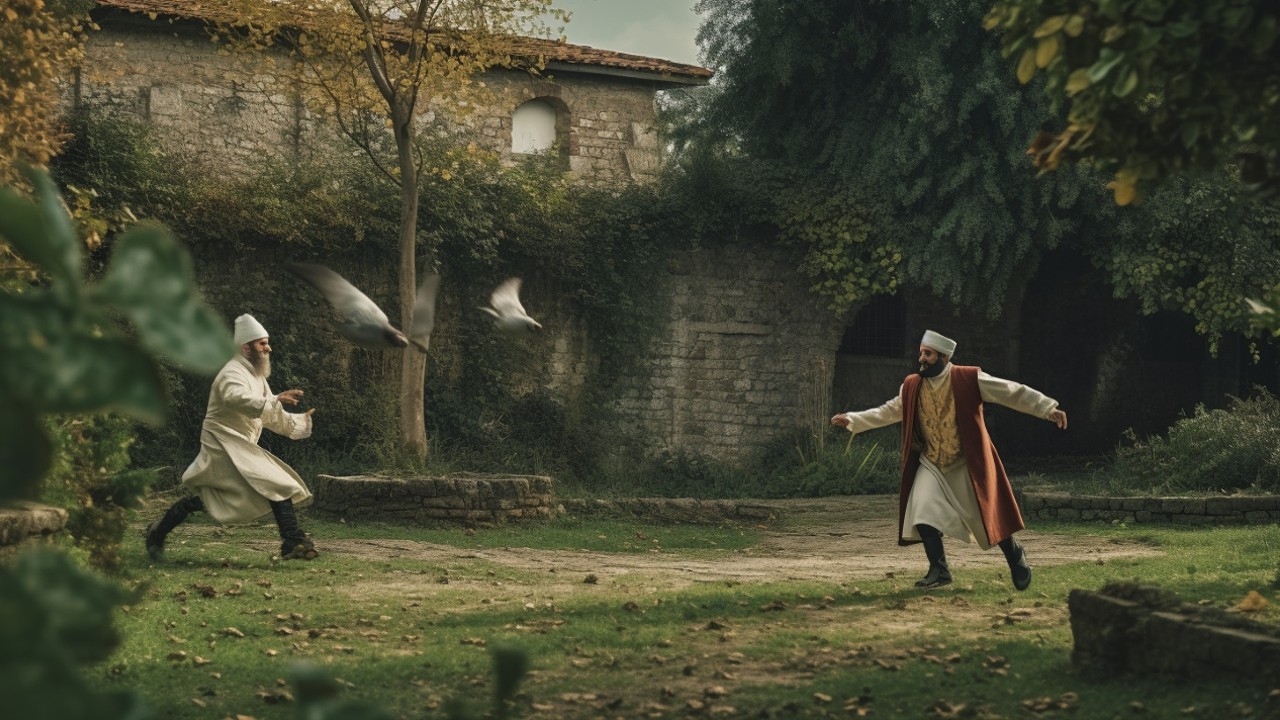The executioners of the Ottoman Empire were never known for their mercy. This, Sultan II. We can also understand Osman from the murder of his testicles after being compressed. In the Ottoman Empire, where there were many different execution methods, there was another game-like method called the “death race”.
In the Ottoman Empire, numerous executions, whether by commoners or by the sultan’s own family, took place at the Topkapi Palace in modern-day Istanbul. silent walls of the palacewitnessed many criminals.
we will talk about “Death Race” The chase, called Topkapı, would start in Topkapı and end in Kumkapı. Let’s look at the details of this interesting execution method, which lasted for about 20 years from the end of the 18th century to the beginning of the 19th century.
Execution methods in the Ottoman Empire varied according to social status and gender.
The method of execution of people in the Ottoman Empire was not only directly related to their position in the society, but also differed according to their gender. For example, those who have committed a crime so heinous as to warrant one of the more painful forms of execution, such as being impaled or hanged to death by a notched meat hook. “ordinary people” only their heads were cut off.
In contrast, higher-ranking persons such as viziers and royalty usually; either with the hangman’s bare hands, or with a bowstring, or strangled with a silk handkerchief would be killed. After death, the body was usually thrown into the sea. As for women; some high-ranking inmates were destined to be tied up in weighted sacks and thrown into the sea while alive.
At that time, body parts were standing at the gate of Topkapi Palace.

Topkapi Palace served as the sultan’s main residence, and according to some sources, heaps of severed heads and other severed body parts (nose, ears, tongue…) of recently killed criminals at the front door of the palace was on display.
Despite numerous executions in the sultan’s palace (it is estimated that more than 30,000 people were executed there during Sultan Selim I alone’s short eight-year reign in the 16th century), there were no officials. Just the executioner, seems like it will never end was assigned to this job.
In common words; gardeners “pruned” criminals.

The job of carrying out the executions usually fell to one of the so-called gardeners of the palace, but that person to be in a very high position In this case, the execution was carried out by the bostancı (chief gardener) of the palace. In short, they “pruned” criminals.
Except this; in various ways for the palace when needed as protection, police and security they functioned well, and several thousand gardeners were on staff at any one time.
The color of the sherbet served to criminals was a harbinger of what would happen to them.

Criminals to be executed on the palace grounds were informed on the day of their execution with a sugary drink made with iced sherbet. This drink; presented to the accused three days after appearing in court. The color of your drink indication of court decision would be. While white was the color of forgiveness, red was the color of death.
High officials such as grand viziers still had some hope, as many of those given red sherbet were killed by a gardener soon after. Bostancıbaşı would race these people through the gardens to the 300-meter execution place next to the Fish Market Gate on the south side of the palace. Runaway, start the race if he finishes in front of the gardener His sentence was reduced to simple exile.
There were also people who beat the head gardener. A well-known name even received an award.

According to historians, based on known documented examples, very few people managed to beat the bostancıbaşı in the race. Losing prisoners would drown immediately upon reaching the gate. The executioner’s knowledge of the inside of the palace and, according to the victim, Considering that it is in a more advantageous position this is hardly surprising.
For the exceptional few who succeed in beating the head gardener, things are sometimes from being exiled It even went better. For example; The last person known to have won this race was Grand Vizier Hacı Salih Pasha in 1822. Far from being pardoned for the respect he earned with his unexpected victory, which was said to be somewhat “impressive”, he was killed and became governor of Damascus.
If you would like to take a look at our other interesting content about the Ottoman Empire:
RELATED NEWS
When You Read the Blood-Crying Execution Methods in the Ottoman Period, You Will Be Thankful for the Period You Live in
RELATED NEWS
The Tragic Story of World Wrestler Kara Ahmet Buried Alive in the Ottoman Empire
RELATED NEWS
300 Spartans, Mind Your Business: The Battle of Çirmen, in which 800 Ottoman Soldiers Defeated an Army of 70,000 with Ingenious Tactics
RELATED NEWS
Meet the Serial Killer ‘Kasimpasa Monster’ Who Sent Scary Letters Even To The Police In The Ottoman Period
RELATED NEWS
The Surprising Relationship of the Statue of Liberty with the Ottoman Sultan: It Was Almost Standing in the Mediterranean!
RELATED NEWS
The Interesting Story of the Banning of the First Automobiles Brought to the Ottoman Empire as “Invention of Gavur”
RELATED NEWS
Oruç Reis: The Ottoman Sailor Who Defyed Europe’s Warships With His Small Ships
RELATED NEWS
Van Helsing’s Ottoman Version: The “Vampire” Incident That Scared and Kidnapped People in a Village in the Balkans
RELATED NEWS
